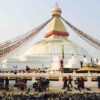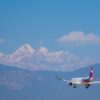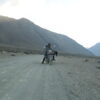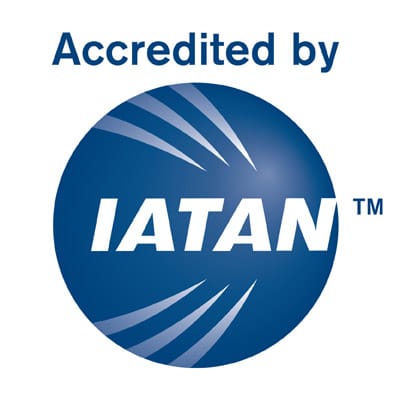WHAT IS ALTITUDE SICKNESS?
Also called Acute Mountain Sickness (AMS), it is an illness that can affect travelers at high altitudes, usually above 2,400m (8,000 feet) such as on Mount Kilimanjaro. Altitude sickness is the name given to the physiological and symptomatic reactions of the body to the low oxygen pressure (‘thinner’ air) that occurs at high altitudes. When oxygen pressure falls, the body reacts by increasing breathing and heart rate and starts to produce more red blood cells. More red blood cells mean more vehicles to carry oxygen in the blood. The body also increases the production of an enzyme that causes the release of oxygen from hemoglobin to the body tissues.
WHAT ARE THE CAUSES OF ALTITUDE SICKNESS?
AMS is caused by reduced air pressure and the lower oxygen levels at high altitudes. The faster you climb, the more likely you will get AMS. It is not only the height that matters so much, it is the rate of ascent.
You are at higher risk for AMS if you live near sea level and have had the illness before. Others at risk are those with diseases of the heart/lungs such as chronic bronchitis and asthma, people who are anemic and those with a history of thromboses. Older people and children are also more susceptible to AMS
Acute Mountain Sickness (AMS) is an illness that can affect travelers at high altitudes, usually above 2,400m (8,000 feet
SYMPTOMS OF ALTITUDE SICKNESS
Your symptoms will depend on the rate of your climb and how hard you push yourself. Symptoms usually start 12-24 hours after arrival at altitude and can affect the nervous system, lungs, muscles, and heart. It is important to remember that reducing the symptoms is not curing the problem. The symptoms of altitude illness are similar to those of a hangover. Initially, it starts with a headache, lack of appetite, tiredness, and feeling off-balance. Many hikers find it difficult to sleep. Then nausea sets in and vomiting starts. Headaches are getting more intense. If you continue, conditions might deteriorate. Sometimes the lack of oxygen can cause the leaking of fluid into the brain and lungs. High Altitude Cerebral Edema (HACE) and High Altitude Pulmonary Edema (HAPE) can develop. Our guides are very experienced with AMS. They will be monitoring all symptoms and will take a safe and well-informed decision on whether to proceed or descend. Most often symptoms will be swiftly relieved with decreasing altitude.
More severe acute mountain sickness includes:
- Blue skin and lips (cyanosis) and gray or pale complexion
- Tight chest
- Cough and coughing up blood
- Confusion, decreased consciousness, or withdrawal from social interaction
- Not being able to walk in a straight line or unable to walk.
PREVENTION OF ALTITUDE SICKNESS
The slower you go, the better you will acclimatize and the higher you are likely to go without experiencing any symptoms. Recognize early symptoms of AMS and if symptoms increase, descend. Your guide will help you make a decision. The only cure is either acclimatization or descent.
- Walk slowly, relax and enjoy.
- Drink plenty of fluids while climbing, at least 3 to 4 liters of water per day.
- Avoid alcohol when ascending
- Talk to your doctor before you attempt to climb Kilimanjaro and ask about the correct preparation, first-aid medication, and treatment options for AMS. If you are anemic, ask your doctor for an iron supplement.
COLDS
The risk of altitude sickness will be increased if you are already suffering from respiratory infections, such as a cold. If you have the flu, do not travel until you are fully recovered. Both colds and the flu are caused by viruses and antibiotics will not be effective as it is used against bacterial infections.
Acute upper respiratory tract infections include pharyngitis/tonsillitis and laryngitis. Complications may lead to sinusitis, ear infection, and sometimes bronchitis which can all be exacerbated by the high altitude.
Some research has shown that restrained exercise might not change the severity and duration of the illness, but the intensity of a Kilimanjaro hike will jeopardize your recovery. Getting plenty of sleep is advised as sleep deprivation is associated with increased receptiveness to infection.
STOMACH TROUBLES
Travelers’ diarrhea is rarely serious or life-threatening, but it does make for an unpleasant trip. Eat only food that is cooked and served hot. Make sure raw fruits are peeled and wash them in clean water. Stay hydrated but drink only sealed beverages and boiled and purified water. Use an alcohol-based hand sanitizer to clean your hands before eating.
Many travelers carry antibiotics with them so they can treat diarrhea early if they start to get sick. Ask your doctor for an antibiotic before you leave on your trip or use over-the-counter medications such as Lomotil or Imodium to treat the symptoms of diarrhea.
MALARIA MEDICINE
Except for the rainforest section, there are almost no mosquitoes on the mountain due to the height above sea level, but you might want to consider taking prophylaxis against malaria if setting off on a safari in Tanzania either before or after your climb. Some anti-malarial medicine may have side effects. Consult your doctor for advice on whether or not to take malaria prophylaxis and about the effect of altitude on the effects of your malarial medicine.
FIRST-AID KIT
Your medical kit should include the following: insect protection, medicine for diarrhea, nausea, and headache, band-aids, antiseptic cream, painkillers, throat lozenges, and tweezers. Also, pack blister plasters (or moleskin) and hand sanitizer. Aloe ferox gel is good for chafing and sunburn and Voltaren gel is good for sore muscles. Remember your medical insurance card, doctors’ prescriptions for any special medicines, and contact numbers of your family.






